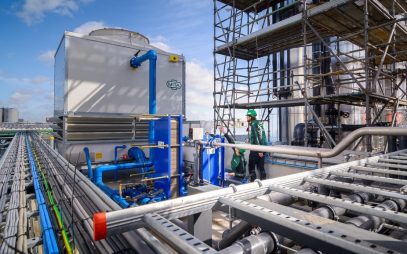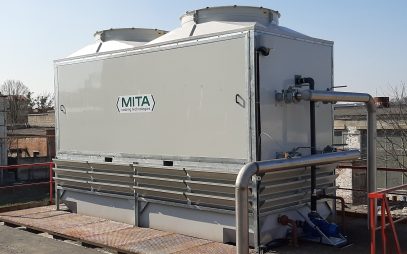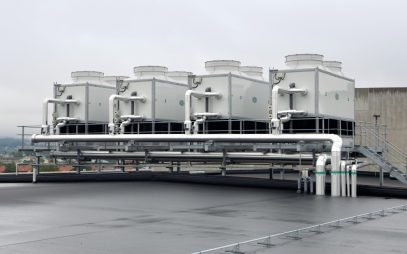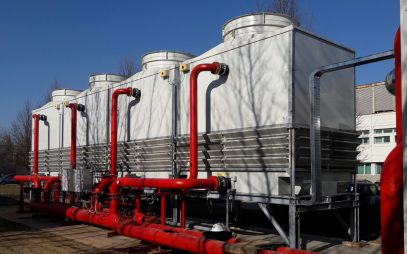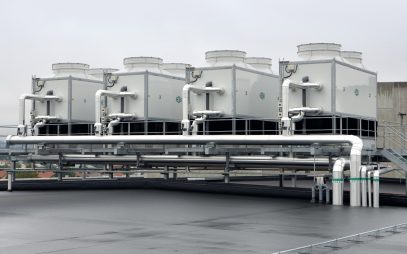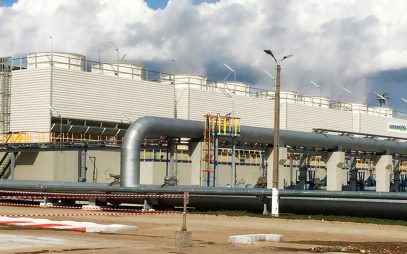In direct evaporative cooling (open-circuit evaporative tower), the process water to be cooled is introduced into the tower and comes into direct contact with the outside air. The water evaporates directly into the air, removing heat and lowering its temperature — leveraging a simple natural principle: the forced evaporation of a small amount of water causes a temperature drop in the main water mass.
Indirect evaporative cooling (closed-circuit evaporative tower) uses the same physical principle for heat dissipation described in the previous section, but with one key difference: the air does not come into direct contact with the water to be cooled. The cooling is indirect because a heat exchanger is present; evaporation occurs in a secondary airflow, which cools the surfaces of the heat exchanger.
This latter system is suitable for sectors where maintaining the physico-chemical properties of the water is essential, such as the food and pharmaceutical industries.
